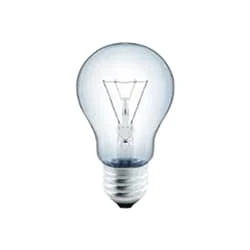Light switch Wiring diagram:
This diagram shows how to make a Light Switch Wiring Diagram. Two-way light switch wiring diagram. In this circuit, we use four lights, a magnetic contactor, two DP MCBs ( Double Pole Miniature Circuit Breaker ), an RCCB ( Residual Current Circuit Breaker ), and four switches. This circuit is very simple and easy to make. If you want to know more about this circuit please stay with our youtube video check your youtube video below the post.
Diagram of light switch wiring:
Components Need for this Project:
You can get the components from any of the sites below:
- Light [See Buy Click Amazon]
- Contactor [See Buy Click Amazon]
- DP MCB [See Buy Click Amazon]
- RCCB [See Buy Click Amazon]
- Switch [See Buy Click Amazon]
Read Also:
Components used to make the Project_name:
01. Light
 |
| Fig 2: Light |
CFLs work in a completely different way from ordinary lamps, they work by using a different process called fluorescence rather than generating light from heat. A typical light bulb wastes 90% of energy and converts only 10% of energy into light, this is where CFL has the biggest advantage. CFL- Curved or conical glass tube filled with argon and a small amount of mercury vapor. The inner wall of the glass is coated with fluorescent material. CFL- It is manufactured using the principle of creating fluorescent light. CFL- Originally white in color but now the construction and use of CFLs producing colored light has become popular.
02. Contactor
 |
| Fig 3: Contactor |
A magnetic contactor is an electrical device used for load control, automation, and protection. It is much like a magnetic reel. However, relays are generally used for low power and voltage, on the other hand, when we think of high power, these heavy-duty contractors only come to mind. It basically works by switching the load on and off. It has 3 terminals whose inputs are denoted as L1, L2, L3, and outputs as T1, T2, and T3. The circuit of the load is made in automation mode or protection using auxiliary contacts. It has two types of terminals. 1) Normally Open (NO). 2) Normally Closed (NC)
03. DP MCB
 |
| Fig 4: DP MCB |
Double pole MCB can control two wires. This circuit breaker is generally used in single-phase electric lines. Double pole MCB circuit breaker input has two wires supply two wires and an output. In a single-phase line, A double-pole MCB circuit breaker is used to give good production. This circuit breaker is provided through phase and neutral circuit breaker, it is very safe. This circuit breaker is preferred for home appliances. A DP MCB usually trips for 2 reasons 1. Overload 2. Short circuit.
04. RCCB
 |
| Fig 5: RCCB |
The RCCB (Residual Current Circuit Breaker) or RCCB is an electrical protective device.Residual Current Circuit Breaker is specially designed to protect the electrical circuit against earth fault and human from electrical shock.In this, under normal condition the load is always connected in between the phase terminal to neutral terminal, hence the flow of phase current is equal to neutral current.Earth fault or fault in a power system can cause excess heating, more power consumption, burning or fire, etc. So, protection against earth leakage is very important.
05. Switch
 |
| Fig 6: Switch |
A Single-Pole, Single-Throw (SPST) Switch. It's Got one Output and One Input. The Switch will Either be Closed or Completely Disconnected. SPSTs are Perfect for on-off Switching. They're also a Very Common Form of Momentary Switches. SPST Switches are Commonly Used in a Variety of Electrical Circuits and Applications, Such as Turning on And off Lights, Fans, and Other Appliances. They can Also be Used to Control the Flow of Electricity to Different Parts of a Circuit or to Switch Between Different Circuits Altogether.
Thank You for visiting the website. Keep visiting for more Updates.
Frequently Asked Questions
Another way is to run a Live wire to both L1s and a Neutral Circuit diagram wire to both L2s, then run a single wire between the power supply and 2 Common terminals. The lamp should be on the Circuit diagram Neutral wire, between the consumer unit and where the Circuit diagram wire splits to meet the switches.
Most two-way switches have a Common circuit diagram terminal, as well as an L1 and L2 terminal. For 2-way switching, currently, you will need to connect both L1 and L2. For 1-way switching, as you have 1 less connection, you only need to use the L1 connection project system.
The single switch Power supply controls a single light (or lighting circuit diagram). 2-Way Switches: A '2-way' switch means there is another switch controlling the same light. These are often used on a staircase, as a large room with switches by each door Circuit diagram.
You would use a 2-way light switch when you have 2 switches controlling 1 light Circuit diagram, for instance in a hallway, where you have a switch at both ends of the hallway that power supply controls the hallway light. You are able to switch the light on and off from either end of the project system hallway.
This cable is labelled as L. This colour also identifies the Circuit diagram's first live cable (L1) in a 3-circuit diagram installation, the following cables being black (L2) and grey (L3). It is not surprising to find that in some cases, grey wiring is also used to identify live in a domestic and installation.


Post a Comment
Do leave your comments